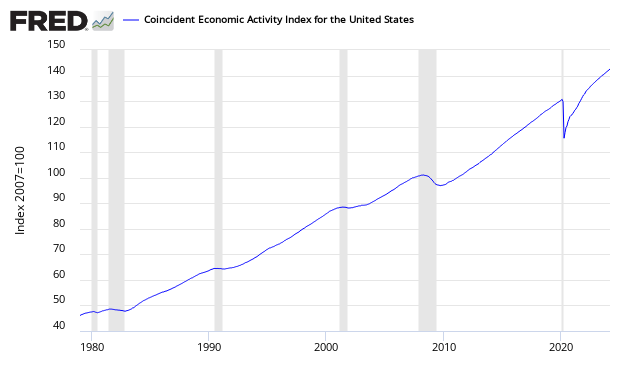

The above graph shows the index value for the US Coincident Index. A comparison of US Coincident Index, Aruoba-Diebold-Scotti business conditions index, Conference Board’s Coincident Index, ECRI’s USCI (U.S. Coincident Index), and Chicago Fed National Activity Index (CFNAI) coincident indicators follows.
Economic indicators that coincide with economic movements are coincident indicators. Coincident indicators by definition do not provide a forward economic view. However, trends are valid until they are no longer valid, making the trend lines on the coincident indicators a forward forecasting tool.
Econintersect‘s analysis of the coincident indices is that:
Excerpt from Philly Fed Report for the United States Coincident Index
The Federal Reserve Bank of Philadelphia has released the coincident indexes for the 50 states for October 2014. In the past month, the indexes increased in 47 states, decreased in one, and remained stable in two, for a one-month diffusion index of 92. Over the past three months, the indexes increased in 48 states, decreased in one, and remained stable in one, for a three-month diffusion index of 94. For comparison purposes, the Philadelphia Fed has also developed a similar coincident index for the entire United States. The Philadelphia Fed’s U.S. index rose 0.3 percent in October and 0.9 percent over the past three months.

The changes shown in the table below are unchanged from the previous month.

The Philly Fed produces this real time coincident indictor report based on six underlying indicators:















